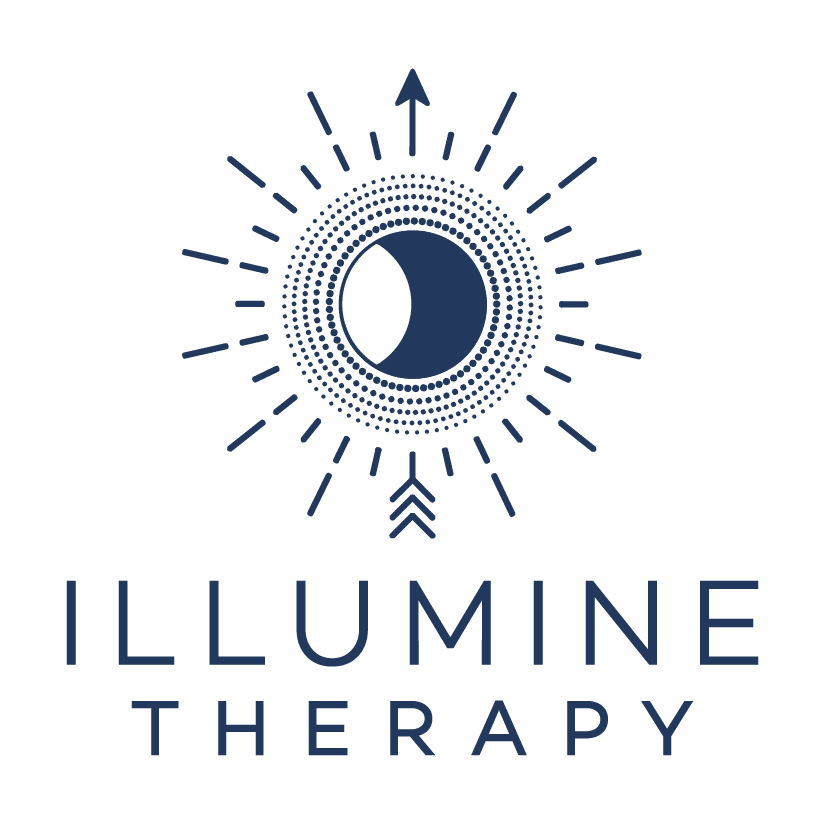Brainspotting is a powerful therapeutic approach that helps high-achieving professionals access and resolve deep psychological pain. In my work as a brainspotting therapist in Ogden, Utah, I have seen how this method reaches far beyond what words can express. By using focused eye positioning, clients can access emotions and stored memory that are often hidden from conscious awareness.
In the following sections, I will explain exactly how Brainspotting works, what a typical session involves, and how long it usually takes to see meaningful progress. As you read, I encourage you to reflect on your own experiences. Brainspotting is not simply a technique; it is a collaboration toward emotional healing, mental clarity, and long-term health.
To begin, let’s explore the fundamental questions: What is Brainspotting, and how does it work?
What Is Brainspotting and How Does It Work?
What Is Brainspotting Therapy?
Scientific research is beginning to show promising outcomes in emotional resilience, trauma recovery, and improved mental health. That said, what matters most is how the experience feels to you.
Brainspotting identifies “brainspots” in the client’s visual field, specific points where trauma, emotion, or pain are held. When we process these areas, it often leads to meaningful healing. Brainspotting blends a brain-based understanding with precise eye movements to access both the conscious and unconscious mind.
Many clients say they finally feel “seen,” not just in the therapy room, but in a way that ripples into their daily lives. Like when you can finally walk the Bonneville Shoreline Trail without that tightness in your chest. Or sit at a family gathering in South Ogden and feel present, not triggered.
In sessions, I guide your eye movements while observing where your gaze naturally lands. These visual points often reveal unprocessed emotion stored deep in the mind and body.
I like to tell my clients that brainspotting helps you reach the emotional and sensory layers of memory, places talk therapy doesn’t always reach. When your brain connects with a specific spot, emotional energy surfaces, allowing it to move and release.
You’ll track a moving pointer, whether it’s my finger or a tool, until you find a point where something shifts inside. That’s a brainspot. These spots often activate the limbic system and prefrontal cortex, which play key roles in emotional processing and decision-making.
Each session supports the central nervous system, helping regulate the body’s responses, ease panic, and create a sense of calm. We also use natural relaxation techniques to reinforce these effects. Over time, this helps rewire the brain for healthier thought patterns and better mental health.
If you’ve struggled with anxiety, trauma, or emotional distress, brainspotting can help you process those experiences in a safe and supported way. It targets symptoms at their neurological root, not just their surface.
The whole approach is especially helpful for high-performing adults who feel overwhelmed by stress, anxiety, or unresolved childhood trauma. Despite outward success, many carry inner burdens that show up as mental distress, fatigue, or shifts in mood.
This method also respects that healing is not linear. You work at your own pace, guided by curiosity and self-trust,not pressure. Clients often find that brainspotting leads to a deeper understanding of their emotional patterns and how to move forward.
How Does Brainspotting Access the Brain?
Brainspotting accesses the brain by using eye positions that correspond to emotionally charged memories stored in the body. I guide you to notice where your eyes naturally settle when recalling a challenging or traumatic experience. This “blind spot” is believed to form a direct connection with your brain’s deeper emotional centers.
According to a neuroblogical hypothesis by Corrigan and Grand, Brainspotting engages structures like the midbrain and limbic system, areas essential for processing emotion and trauma. By focusing your gaze on a specific point, brainspotting bypasses the conscious mind’s defenses, reaching buried memories that traditional therapies might miss.
This alignment of visual attention with emotional distress is supported by clinical research showing that peripheral vision plays a critical role in right-brain processing. Your eyes thus act as a conduit for accessing and regulating the parts of your mind that store unresolved trauma (Meissner et al., 2023). Many clients report that, as sessions progress, the intensity of stressful memories decreases as they are processed through these activated neural pathways.
According to a 2021 meta‑analysis of fMRI findings, the amygdala reliably fires during emotional arousal and then tapers off when the prefrontal cortex engages in regulation strategies like reappraisal—paralleling how brainspots seem to activate then soothe deeper emotional centers. As a result, many clients experience reduced anxiety and a greater sense of relaxation after brainspotting sessions. Essentially, your eyes serve as a portal to unlock automatic emotional responses, enabling your brain to reprocess experiences and reshape future reactions.
In practice, this noninvasive technique often produces noticeable results within a few sessions. Clients describe a profound inner calm, increased clarity, and less mental fatigue, particularly in cases where conventional talk therapies did not reach the trauma’s root.
What Is the Role of Eye Positioning in Brainspotting?
The role of eye positioning in brainspotting is pivotal. When guided to focus on specific areas within your visual field, the movement of your eyes triggers neural networks that hold unconscious emotional material. I explain to clients that the direction and focus of your gaze can reveal unconscious truths about your emotional state.
This specific eye positioning serves several functions. It signals the onset of a stress response, locates areas where adaptive patterns have become maladaptive, and initiates neurobiological recalibration. In the exact moment your gaze locks onto a brainspot, your body begins releasing long-held tension and stress. This is largely due to the connection between the oculomotor system and the reticular activating system, which work together to regulate arousal and attention.
According to a neuroimaging study, changes in your pupil dilation and the direction of your gaze are reliable indicators of emotional arousal and cognitive load. When your eyes drift naturally toward a particular point in your peripheral vision, it often signifies that your nervous system is communicating a deeper emotional unrest. By identifying and validating these signals, brainspotting helps you learn to trust your internal cues and manage your emotions more effectively.
I have observed significant improvements in clients’ stress management and emotional regulation when eye positioning is properly used in therapy. This approach not only deepens the session’s emotional connection but also reinforces your innate capacity for self-healing through repeated, guided attention.
How Does Brainspotting Help Process Trauma and Emotions?
As a trauma therapist in Ogden, UT, I apprecieate how Brainspotting processes trauma and emotions by giving your brain a structured opportunity to reaccess and reframe past experiences. I have seen that this method allows you to confront overwhelming memories safely without becoming re-traumatized. The process begins by identifying a brainspot that resonates with a painful memory. Once found, your nervous system can gradually release the stored emotional charge in a controlled way.
At its core, brainspotting leverages neuroplasticity—the brain’s remarkable ability to reorganize and form new neural connections. And in real life? That might look like noticing you’re less reactive when your boss piles on one more task, or feeling less exhausted after a weekend packed with family obligations and errands at Smith’s.
Revisiting traumatic memories in a safe space enables your brain to rewire itself toward healthier, adaptive patterns. Clients often report that the intense emotional energy associated with old memories slowly dissipates over successive sessions. Along with relief from anxiety or panic attacks, there are noted improvements in mood and cognitive function.
Clinically, brainspotting reduces hyperarousal in the autonomic nervous system by balancing both parasympathetic and sympathetic branches. This balance is crucial if you have experienced prolonged stress or trauma, as it restores a sense of calm and body-mind integration. I observe that clients begin to see themselves as more resilient, capable, and empowered as their trauma’s grip diminishes.
In addition, brainspotting integrates effectively with other therapeutic modalities—such as EMDR and mindfulness—to enhance recovery. Clients appreciate that brainspotting does not force reliving trauma through narrative retelling; rather, it allows for gentle observation, fostering detachment and safety. As emotional release occurs, clients gain clarity about how their past affects their present behavior, leading to profound relief and insight.

How Long Does Brainspotting Take to Work?
What Factors Influence the Time Brainspotting Takes to Work?
The time required for brainspotting to work varies based on several factors I discuss at the start of therapy. Chief among these is the nature and severity of your trauma. Clients with recent, isolated traumas may notice improvements within a few sessions, whereas those with chronic or long-standing trauma might require several months to see significant changes. Your overall mental health, the presence of co-occurring issues like anxiety or depression, and your readiness to face deep-seated emotions also play a role.
Another vital factor is your individual physiological response; each person’s nervous system processes stress differently. Consistency in attending sessions is essential, as repeated exposure to brainspots in a safe environment consolidates progress. External stressors can play a big role in how quickly you notice improvements. For example, managing back-to-back Zoom meetings from your home office in North Ogden or navigating relationship conflict after a long day of caregiving can add layers of emotional strain that affect your progress.
The strength of the therapeutic alliance is important as well. Trust, safety, and open communication between you and your therapist can accelerate the healing process. Research shows that strong rapport often correlates with faster symptom reduction. In my practice, I adjust session pace to match your individual needs, ensuring that we never rush the process.
Factors such as your past experience with therapy and comfort with body-based methods may also affect the timeline. Some clients need extra time to become familiar with the process, while others who are already comfortable with somatic therapies may show quicker responses. Finally, specific techniques like “dual attunement” ensure that both your internal experience and my support work together optimally, helping set realistic expectations on when you might start noticing improvements.
How Many Brainspotting Sessions Are Typically Needed?
The number of brainspotting sessions depends on your individual needs. Many clients begin to notice subtle emotional and physiological changes within a few sessions. However, substantial improvements in processing trauma and deep-seated emotional patterns often require a longer course of treatment.
For moderate trauma, many people begin to see breakthroughs within 8 to 12 sessions. Some experiences run deeper and take more time to untangle. If you’re carrying layers of complex trauma like perfectionism, caregiving burnout, or workplace microaggressions, healing may unfold over 20 sessions or more.
Brainspotting is inherently cumulative. Early sessions focus on identifying brainspots and establishing a therapeutic rhythm, while later sessions delve into processing deeper material. Consistent feedback during sessions enables me to tailor the approach so that progress is achieved safely and effectively.
In many cases, brainspotting is part of a broader therapeutic strategy. You may experience sessions intermittently over time, sometimes complemented by other therapies such as EMDR or cognitive behavioral therapy. This integrated approach often supports long-term maintenance of improvements beyond the intensive phase of treatment.
It is important to note that the number of sessions is not the sole indicator of healing; the depth of processing, improved coping strategies, and your ongoing self-care are equally crucial for lasting change.
When Can Clients Expect to Notice Results?
Many clients start experiencing improvements in emotional regulation, reduced anxiety (especially with my help as an anxiety therapist in Ogden, UT), and enhanced clarity as early as one or two sessions, though these early results may be subtle. Noticeable changes in interpersonal relationships, decreased depressive symptoms, or improved sleep patterns usually emerge after several weeks of consistent therapy.
The timeline for results depends on your initial clinical presentation and commitment to the therapeutic process. Some clients report a sense of lightness after just one session. They describe feeling more connected to their inner selves, like finally enjoying a quiet morning at Grounds for Coffee without the familiar edge of anxiety. For others, the shift happens more gradually over time.
It is common to describe an incremental release, where the impact of traumatic memories lessens gradually over time. With continued sessions, previously triggering memories may no longer provoke an overwhelming response, indicating that your brain is rewiring to create healthier coping mechanisms.
Clients who actively engage in the process and complement therapy with mindfulness, journaling, or relaxation techniques often see faster progress. Additionally, factors such as improved sleep, nutrition, and support from loved ones can enhance overall outcomes. Setting realistic expectations and maintaining consistency are key, lasting change typically unfolds over multiple sessions rather than in a single breakthrough.
How Do Therapists Assess Progress During Brainspotting?
Assessing progress in brainspotting is a collaborative and ongoing process. I rely on both your subjective feedback and objective markers such as reductions in anxiety symptoms, fewer flashbacks, or improved sleep patterns. At the start of treatment, we set clear goals that may involve both behavioral changes and emotional shifts. As therapy progresses, these goals are revisited and the treatment plan is adjusted accordingly.
I also use standardized assessment tools when needed, such as rating scales for anxiety, depression, or trauma symptoms, to provide measurable feedback alongside your personal reports. This integration of objective data and your narrative insights allows me to optimize each session for the best possible outcomes.
Regular check-ins during sessions ensure you can express your evolving feelings and experiences, fostering a strong therapeutic alliance. Clients often report a clearer understanding of their emotional triggers and the development of effective coping strategies, indicating significant therapeutic progress.
Ultimately, success is measured by your improved quality of life and ability to self-regulate outside the therapy room. When you notice a substantial decrease in the intensity of traumatic memories and a more balanced emotional state, it confirms the effectiveness of the work we do together.
What Happens During a Brainspotting Session?
What Are the Step-by-Step Stages of a Brainspotting Session?
A typical brainspotting session unfolds in several stages:
- Centering and Calibration: You begin by settling into a relaxed state, often using focused breathing exercises and grounding techniques. This phase prepares your mind and body for the therapeutic work ahead.
- Scanning the Visual Field: I gently guide your gaze across a designated target, inviting you to notice any physical or emotional sensations. Specific points that elicit a stronger response are identified as brainspots.
- Focused Processing: Once a brainspot is identified, you keep your attention on it while receiving support from me. During this phase, you might notice sensations such as warmth, tingling, or tension release as stored trauma is processed.
- Consolidation: In the final stage, we integrate the session’s experiences through reflective dialogue or brief mindfulness exercises. This helps stabilize the changes so that they effectively translate into daily coping skills. The processing continues to unfold as you apply these insights outside the session.
Throughout each stage, my role is to guide you safely, monitor your physiological responses, and pace the process to suit your emotional resilience.
How Does the Therapist Identify Brainspots?
Identifying brainspots is both an intuitive and clinical process. I carefully observe your eye movements as you scan the visual field and invite you to describe any shifts in sensation or subtle bodily cues. Areas where you report a slight increase in intensity or emotional stir are flagged as potential brainspots.
This identification involves both objective signs, such as changes in your breathing or muscle tension, and your subjective reports. Research supports that these eye-position markers are linked to subcortical brain processes that store traumatic memories. Through systematic questioning and close observation, I help you become more aware of these internal cues, empowering you to trust your body’s signals and facilitating the healing process.
What Should Clients Expect to Feel or Experience?
During a session, you may experience a variety of physical and emotional sensations. As you enter deep, relaxed focus, you might feel warmth in your chest, tingling in your limbs, or changes in your breath—kind of like when a song hits you out of nowhere while driving past the Ogden Canyon overlook. These are signs we’re getting close to something important.
As you concentrate on the brainspot, you will likely feel a gradual release of long-held tension. Many clients describe this as your body unburdening itself, allowing difficult feelings like grief or anger to be acknowledged and gently released. It is common to experience alternating moments of emotional intensity and profound relief. Often, these shifts lead to improved sleep, reduced anxiety, and better overall stress management after the session.
I emphasize that even if the process is intense, it is always managed safely through open communication and pauses when needed, ensuring that any discomfort supports healing rather than retraumatization.
How Long Does Each Brainspotting Session Last?
A brainspotting session typically lasts between 60 to 90 minutes, though the duration may vary based on your needs and the depth of the material we engage with. My sessions are structured to provide enough time for centering, thorough processing of brainspots, and consolidation of insights. While 60 minutes are often sufficient, sessions may extend to 90 minutes during particularly intense emotional work.
Clients appreciate the structured yet flexible session length, which adapts to both the therapeutic demands of the process and your personal pace of healing. The key is that by the session’s end, you leave with a tangible sense of progress. Maybe your drive home along Harrison feels quieter inside your mind. Maybe your shoulders sit a little lower than when you walked in.
What Conditions Can Brainspotting Treat Effectively?
How Does Brainspotting Work for Trauma and PTSD?
Brainspotting is particularly effective for treating trauma and PTSD because it directly targets the neural pathways where traumatic memories reside. In my clinical work, I have observed that clients with PTSD experience reductions in flashbacks, intrusive thoughts, and overall hyperarousal as their brainspots are processed.
This therapeutic technique accesses subcortical areas—such as the amygdala and hippocampus—that are often overactive in PTSD. According to a 2023 PET scan study by Foo and Yudistiro, brainspotting reduced PTSD symptoms while also affecting glucose metabolism in trauma-related brain regions like the mid-frontal and medial temporal cortices. By helping to regulate these centers, brainspotting enables more controlled processing of traumatic experiences without triggering the full intensity of the trauma.
As traumatic memories are gradually integrated in a safer way, overall distress diminishes. Clients report fewer nightmares, reduced anxiety, and a greater sense of emotional balance, along with improvements in their daily functioning and relationships.
Can Brainspotting Help With Anxiety and Emotional Regulation?
Yes, brainspotting is effective for reducing anxiety and enhancing emotional regulation. By targeting specific brainspots, the therapy recalibrates your nervous system to reduce chronic hyperarousal seen in anxiety disorders.
Many clients who struggle with overwhelming stress or anxiety notice that, after focusing on a brainspot, their body releases tension and they experience a calmer baseline state.This method bridges the gap between cognitive and physiological aspects of anxiety.
Over time, as you learn to recognize early signs of anxiety and respond using techniques developed during our sessions, you experience more balanced emotional responses. Enhanced sleep, better concentration, and improved mood are common additional benefits noted by clients.
Is Brainspotting Effective for Depression and Other Emotional Challenges?
Brainspotting not only alleviates trauma and anxiety but also shows promise in easing symptoms of depression and other emotional challenges. By accessing unresolved emotional pain and reprocessing it, this method helps break the negative thought patterns that fuel depression.
Clients with chronic low mood often report a shift toward a more compassionate internal dialogue and an increased sense of self-worth after multiple sessions. They notice it in small, everyday moments, like not beating themselves up after a tough day or finally having the energy to say yes to a weekend hike at Waterfall Canyon.
In treating depression, brainspotting can reduce stress markers such as elevated cortisol levels and help restore a more balanced neurochemical state. The gentle reprocessing allows you to let go of feelings of shame or guilt without the need for repetitive narrative retelling. For those dealing with additional challenges like unresolved grief or chronic stress, brainspotting offers a holistic approach that supports overall mental wellness.
How Does Brainspotting Integrate With Other Therapies?
Brainspotting can be seamlessly combined with other therapeutic modalities to enhance overall treatment outcomes. In my practice, I often integrate it with EMDR, sensorimotor psychotherapy, and mindfulness-based practices.
For instance, while brainspotting targets deep emotional memories through eye-positioning, EMDR may provide additional structured bilateral stimulation. Likewise, mindfulness techniques can ground you in the present moment, reinforcing emotional regulation during and after sessions. This integrative approach allows for a customizable treatment plan tailored to your unique needs.
For some, that means pairing brainspotting with the grounding practices you already use—whether it’s yoga at Lotus, meditation apps, or journaling after church on Sundays. If one method is not producing the desired results, another may be emphasized to achieve better outcomes. Clients frequently benefit from this multi-modal strategy, which not only addresses specific symptoms but also builds long-term resilience and self-awareness.
How Does Brainspotting Compare to Other Therapies?
What Are the Key Differences Between Brainspotting and EMDR?
Both brainspotting and EMDR are trauma-focused therapies that utilize eye movements and bilateral stimulation to process traumatic material, but they differ in approach. Brainspotting is more fluid and client-led, as you are guided to find natural brainspots that correlate with unprocessed trauma.
In contrast, EMDR follows a standardized protocol with predetermined eye movements, tapping, or auditory tones. This flexibility in brainspotting can sometimes provide faster access to deep-seated memories because it adapts to your spontaneous eye movements. It directly targets core emotional centers, allowing for a more organic processing of trauma.
While EMDR is well established and effective, many clients appreciate that brainspotting feels less formulaic and more tailored to their unique inner landscape. In some cases, a combination of both modalities is used to capitalize on their respective strengths.
How Does Brainspotting Differ From Traditional Talk Therapy?
Traditional talk therapy relies heavily on verbal communication and may struggle to access the nonverbal, deeply buried components of trauma stored in the body. Brainspotting, however, uses nonverbal cues, specifically eye positioning, to bypass cognitive defenses and reach the unconscious mind directly. This often translates into a faster, more profound emotional release.
Whereas talk therapy might require many sessions to uncover the roots of your distress, brainspotting can act as a “shortcut” by tapping directly into the areas of the brain where trauma is stored. Additionally, by integrating somatic experiencing and mindfulness elements, brainspotting offers a more holistic approach that restores a sense of control and empowerment, especially for clients who have felt “stuck” despite extensive talk therapy.
What Are the Unique Benefits of Brainspotting?
The unique benefits of brainspotting lie in its ability to access hidden layers of your emotional and physiological experience with deep emotional release in a relatively short timeframe. By pinpointing brainspots, you can address previously inaccessible traumas, which leads to enhanced emotional regulation, reduced anxiety, and a more balanced mood.
Another key benefit is the integration of body and mind. Many clients feel the difference in their day-to-day lives. Less clenching at the steering wheel. Fewer headaches by mid-afternoon. A deeper exhale while watching the sunset over the Wasatch.
Its flexibility allows it to be tailored for a range of issues from PTSD and trauma to anxiety, depression, and even performance stress. Unlike traditional therapies that may require repetitive recounting of trauma, brainspotting gently encourages the release of emotional energy, helping you build resilience and improve self-awareness.
How to Find a Qualified Brainspotting Therapist?
What Qualifications Should a Brainspotting Therapist Have?
When seeking a brainspotting therapist, it is essential to choose someone who is both certified and experienced in this modality. A qualified therapist should have completed specialized training in brainspotting, often available through accredited institutes, and hold additional credentials in related areas such as EMDR or sensorimotor psychotherapy. Experience working with clients dealing with complex trauma, especially among high-achieving professionals under chronic stress, is also crucial.
The right therapist will understand the neurobiological basis of trauma, including how eye movement relates to activation in the limbic system. In my practice, I combine clinical expertise with a compassionate approach, ensuring a safe and supportive environment for healing. Client testimonials, referrals, and professional reviews can also be helpful in identifying a skilled practitioner.
What Questions Should You Ask a Brainspotting Practitioner?
Before beginning therapy, consider asking potential practitioners:
- What specific training and certifications do you have in brainspotting?
- How many years have you been practicing brainspotting therapy, and what types of clients have you worked with?
- How do you integrate brainspotting with other therapeutic techniques?
- How do you monitor and assess progress throughout the therapy process?
- What should I expect during a typical session, and how do you ensure my safety during intense emotional processing?
These questions will help ensure that the therapist’s experience and approach align with your needs, fostering a strong, trust-based therapeutic partnership.
What Are the Benefits of Working With a Certified Brainspotting Practitioner?
Working with a certified brainspotting practitioner brings several benefits. Certification indicates that the therapist has undergone specialized training and adheres to recognized standards for trauma processing. This provides you with confidence that you are receiving high-quality care using up-to-date techniques.
A certified practitioner is more likely to tailor the treatment plan to your individual needs, ensuring that your unique trauma history is addressed. They also employ standardized assessment tools to track your progress, combining quantitative measures with your personal feedback. Ultimately, a certified therapist creates a safe, empathetic, and nonjudgmental environment that supports profound and lasting healing.
What Are Common Questions About Brainspotting?
How Safe Is Brainspotting Therapy?
Brainspotting is widely regarded as a safe and effective method for processing trauma and alleviating emotional distress. Each session is conducted with careful attention to your emotional and physical state, using grounding exercises and continuous verbal feedback to help you navigate any intense moments.
Although some clients may experience temporary discomfort as suppressed emotions surface, these symptoms are usually short-lived and pave the way for effective healing. Kind of like the sting of jumping into Pineview Reservoir on a chilly day, it’s uncomfortable at first, but afterward your whole body feels more alive and grounded. Both clinical experience and research highlight improvements in emotional regulation and self-awareness, underscoring its safety when practiced in a supportive therapeutic setting.
How Much Does Brainspotting Cost?
The cost of brainspotting therapy varies depending on factors such as location, therapist experience, and session length. In Ogden, Utah, session fees typically range from $150 to $250. Costs may differ if sessions are provided in-person or through secure teletherapy.
Many clients find the investment worthwhile given the profound improvements in emotional well-being and quality of life that result from effective therapy. Options such as flexible payment plans or superbills for insurance reimbursement are often available to assist with the cost.
Can Brainspotting Be Done Online?
Yes, brainspotting can be effectively conducted online through secure teletherapy platforms. This option is especially beneficial for clients who are unable to attend in-person sessions. In an online setting, I guide you through the process using a webcam for eye-tracking and real-time feedback, while maintaining the core components of brainspotting.
Although working online requires reliable internet access and some adjustments, many clients report that the virtual format is just as beneficial as in-person sessions when conducted in a private, distraction-free environment.
Are There Any Side Effects of Brainspotting?
Most clients experience minimal side effects from brainspotting. As with any therapy that delves deep into emotional processing, you might encounter temporary discomfort, mild headaches, or disrupted sleep immediately after a session. These effects are typically transient and indicate that the therapy is effectively engaging with previously unprocessed material.
I encourage open communication so that any side effects can be promptly addressed by modifying the therapy pace or incorporating additional grounding and self-care techniques. Generally, the benefits far outweigh these brief discomforts, leading to improved emotional and physical resilience over time.

Tables and Visual Summaries
Before we dive into the table, let’s name what makes brainspotting feel so different. It’s not just the science, it’s the structure, the pacing, and the safety. When we combine clear stages with real-time feedback and gentle integration with other therapies, something powerful happens. Healing becomes less abstract and more tangible. More like a guided walk through Ogden’s trails than a blind leap into the unknown.
Below is a comprehensive table summarizing key aspects of brainspotting therapy:
| Component | Function | Benefit | Clinical Indicator |
|---|---|---|---|
| Centering and Calibration | Calibration Establishes a relaxed state | Enhances readiness for trauma processing | Improved parasympathetic activity |
| Scanning and Brainspot Identification | Uses eye positioning to locate distress signals | Accesses deep-seated memories and emotions | Eye movement patterns, physiological cues |
| Focused Processing | Engages emotional centers through sustained focus | Facilitates the release of traumatic energy | Reduced cortisol levels |
| Consolidation | Integrates insights via reflection and mindfulness | Reinforces lasting neural reorganization | Stabilized mood, improved sleep |
| Therapeutic Alliance | Builds trust and safety | Improves treatment adherence and outcomes | Positive client feedback, session ratings |
| Integration with Other Modalities | Combines with EMDR, mindfulness, etc. | Enhances overall treatment efficacy | Multi-modal therapeutic benefits |
| Ongoing Assessment | Uses standardized tools to measure progress | Provides objective metrics for healing | Symptom reduction scales |
Frequently Asked Questions
Q: What is the core principle behind brainspotting?
A: Brainspotting is based on the idea that specific eye positions correlate with deeply held emotional experiences. By guiding your gaze to these “brainspots,” the therapy accesses traumatic memories stored in the brain and body, triggering neurobiological reprocessing that helps release distress and improve emotional regulation.
Q: How soon can I expect to feel relief after starting brainspotting therapy?
A: While subtle improvements may be noticed within the first few sessions, many clients begin to experience more substantial relief a,often available through accredited institutes, and hold additional credentials in related areas such as EMDR or sensorimotor psychotherapy. bring a sense of calm, while full healing integration can take several months.
Q: Is brainspotting appropriate for everyone?
A: Brainspotting is highly effective for conditions like trauma, anxiety, PTSD, and depression, but it may not be suitable for everyone. It requires emotional readiness and stability; if you experience severe dissociation or are in a high-risk situation, additional supportive therapies may be necessary. Always consult with a qualified therapist about your specific needs before beginning treatment.
Q: Can brainspotting be combined with other therapeutic approaches?
A: Yes, brainspotting works well alongside modalities such as EMDR, mindfulness, and somatic therapies. Combining these approaches creates a comprehensive treatment plan tailored to your unique needs and often leads to enhanced overall outcomes.
Q: What should I do if I experience discomfort after a session?
A: It is normal to feel some transient emotional or physical discomfort after a session as suppressed emotions surface. I often suggest doing something nurturing after a session, take a slow walk around Beus Pond, sip tea without multitasking, or journal what came up. And if anything feels too intense or lingers, bring it into our next session. We’ll tend to it together. Your safety and comfort are always my top priorities, and adjustments to the therapy can be made as needed.
Final Thoughts
Brainspotting offers a unique and powerful method for accessing and processing deep-seated emotional trauma. Throughout this article, I have explained how the therapy works, the structured stages involved, and its benefits for emotional regulation, anxiety reduction, and trauma healing.
Understanding these mechanisms and realistic timeframes can help you approach brainspotting with informed expectations. Remember, healing is hard. It’s also deeply worth it. Whether you’re just starting to explore therapy or you’ve tried everything under the sun, brainspotting offers a new way in. One that honors your pace, your story, and your body’s wisdom.
You don’t have to go it alone. If any of this resonates, feel free to reach out. No pressure, just support.
References and Supporting Sources
- Corrigan, F., & Grand, D. (2013). Brainspotting: Recruiting the midbrain for accessing and healing sensorimotor memories of traumatic activation. Medical Hypotheses, 80(6), 759–766.
- Meissner, S. N., Bächinger, M., Kikkert, S., Imhof, J., Missura, S., Carro Dominguez, M., & Wenderoth, N. (2023). Self-regulating arousal via pupil-based biofeedback. Nature Human Behaviour, 8(1), 1–20.
- Berboth, S., & Morawetz, C. (2021). Amygdala-prefrontal connectivity during emotion regulation: A meta-analysis of psychophysiological interactions. Neuropsychologia, 153, 107767.
- Demos, K. E., Kelley, W. M., Ryan, S. L., Davis, F. C., & Whalen, P. J. (2008). Human amygdala sensitivity to the pupil size of others. Cerebral Cortex, 18(12), 2729–2734.
- Flückiger, C., Del Re, A. C., Wampold, B. E., & Horvath, A. O. (2018). The alliance in adult psychotherapy: A meta-analytic synthesis. Psychotherapy, 55(4), 316–340.
- Thome, J., Frewen, P., Daniels, J. K., Densmore, M., & Lanius, R. A. (2014). Altered connectivity within the salience network during direct eye gaze in PTSD. Borderline Personality Disorder and Emotion Dysregulation, 1(17)
- Foo, M., & Yudistiro, R. (2023). A study of brainspotting therapy in PTSD using 18FDG brain PET scan to evaluate glucose metabolism changes. Konselor, 11(4), 126–135.










